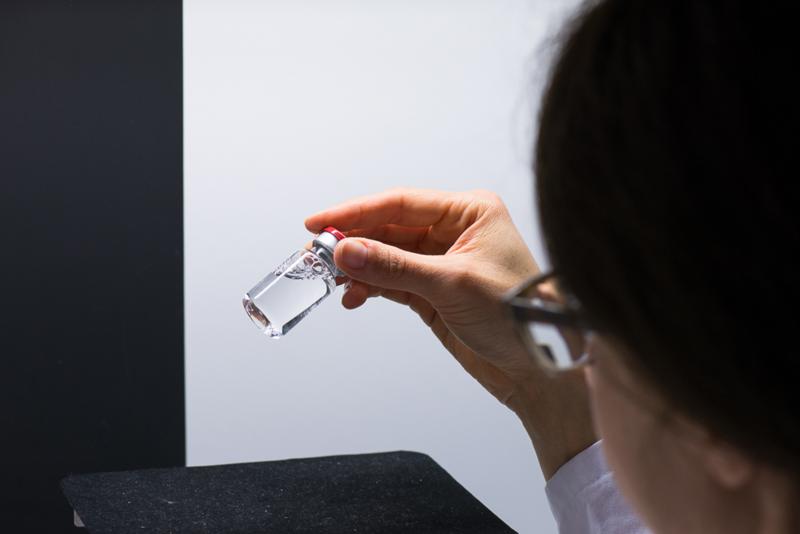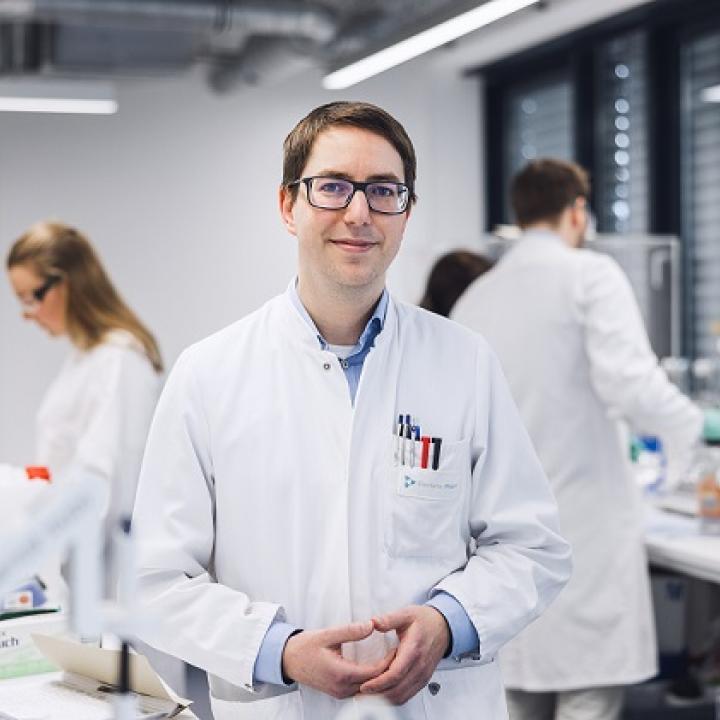Visual inspection
Visual inspection aims to determine the absence or presence of visible particles within parenteral products.
Visual inspection is performed by trained human operators using their naked eye. The European Pharmacopoeia and the Japanese Pharmacopoeia specify inspection conditions, such as light source, handling procedure, inspection time, and background, whereas no instructions are given by the United States Pharmacopoeia (USP).

Especially during formulation development, where visual inspection is mainly used to detect proteinaceous particles, a ranking of the extent of visible particle formation can be beneficial to differentiate between formulations with only few visible particles and those with a high number of visible particles. Within the “Deutscher Arzneimittel Codex” (DAC) a scale and procedure is described, which ranks the presence of visible particles in scores from 0 (no particles visible within 5 s) to 10 (particles visible immediately and clearly in great quantities within 5 s). In many cases, company- or project-specific scores are developed to rate the formation of visible particles during formulation development.
During formulation development, a visual inspection is performed to judge if particles are formed within formulations, e.g., during forced degradation or stability studies. For this application, usually a small number of vials/containers is inspected and a rating of the extent of visible particle formation can be helpful to differentiate between formulations.
The main challenge of visible inspection is the probabilistic nature of the test even when performed under standardized conditions.
The lower particle size detection limit and the outcome of visual inspection depends on various factors, such as the examination settings (light source and background, auxiliary equipment), the operator (training, eye sight, fatigue, concentration), primary packaging (vial type and size, filling volume), formulation properties (viscosity) and particle properties (concentration, refractive index, shape). Depending on the listed factors, usually particles larger than 50-100 µm can be detected as visible.
Quality & biosafety level of this method
We provide all our analytical services with the highest quality standards. Each project is carried out by experienced scientists and every report or data presentation is comprehensively checked by a scientific reviewer. We offer this technology with the following quality and biosafety level:
Contact us
Contact us
Do you have any questions? Want to analyze your samples?


